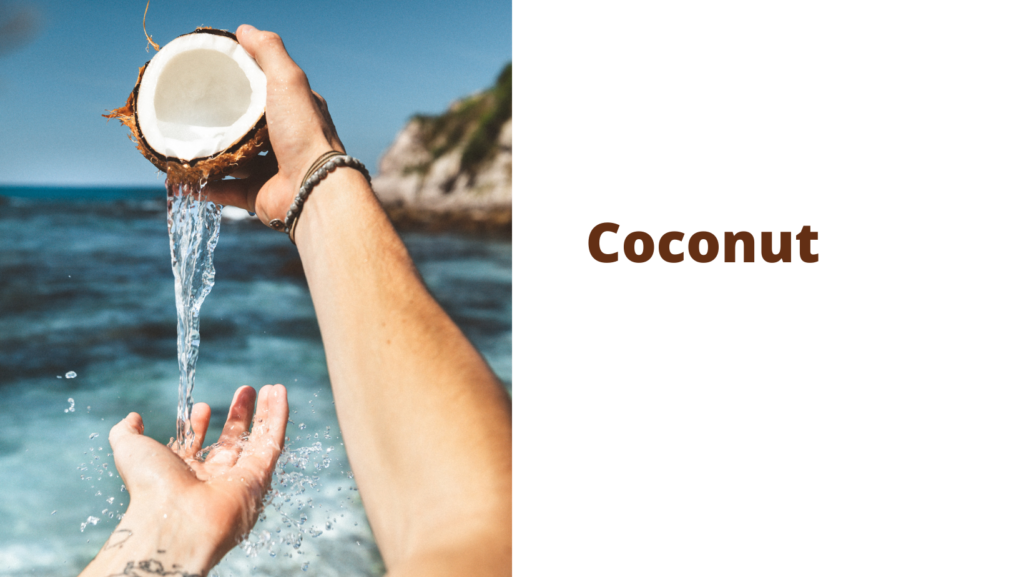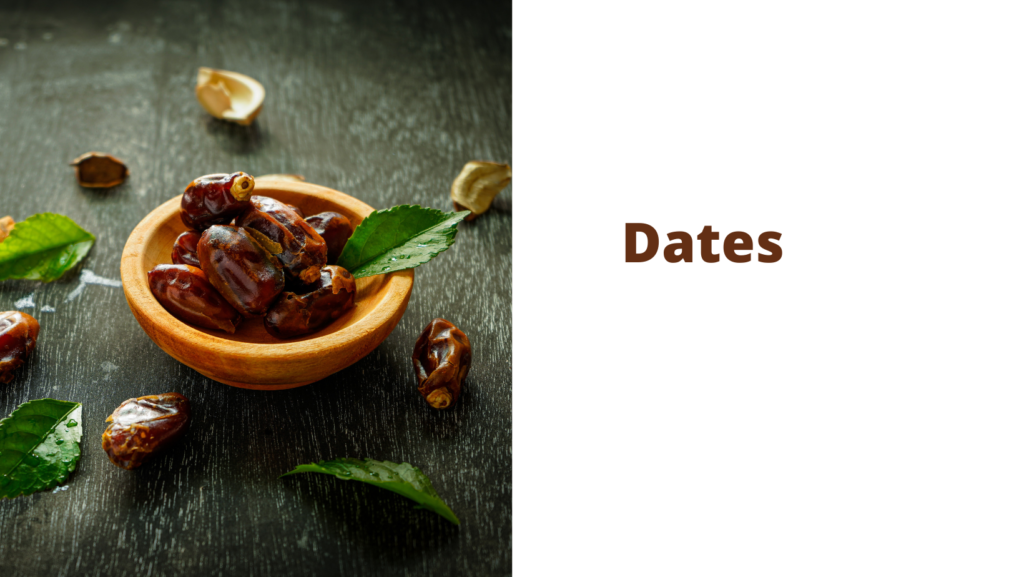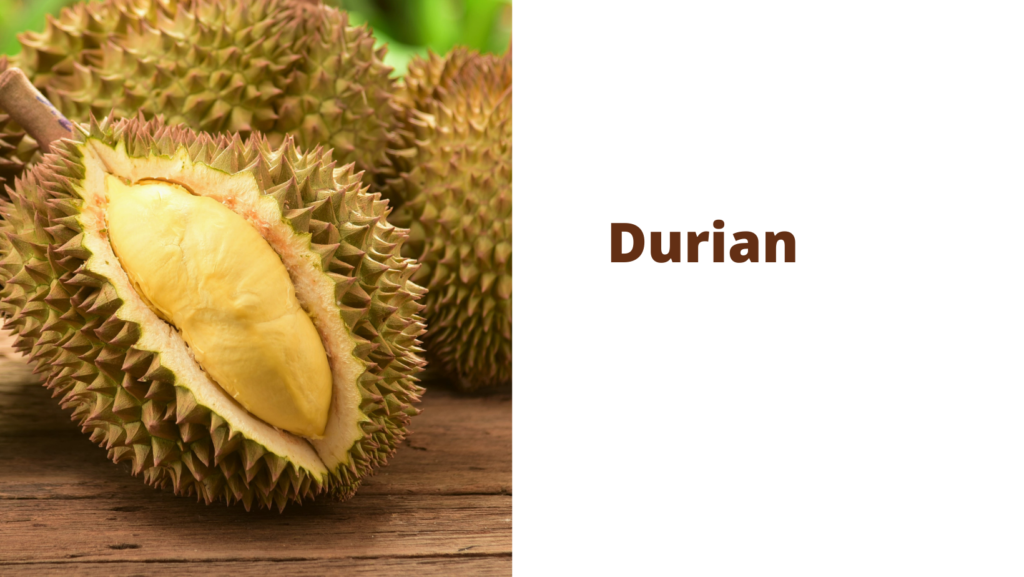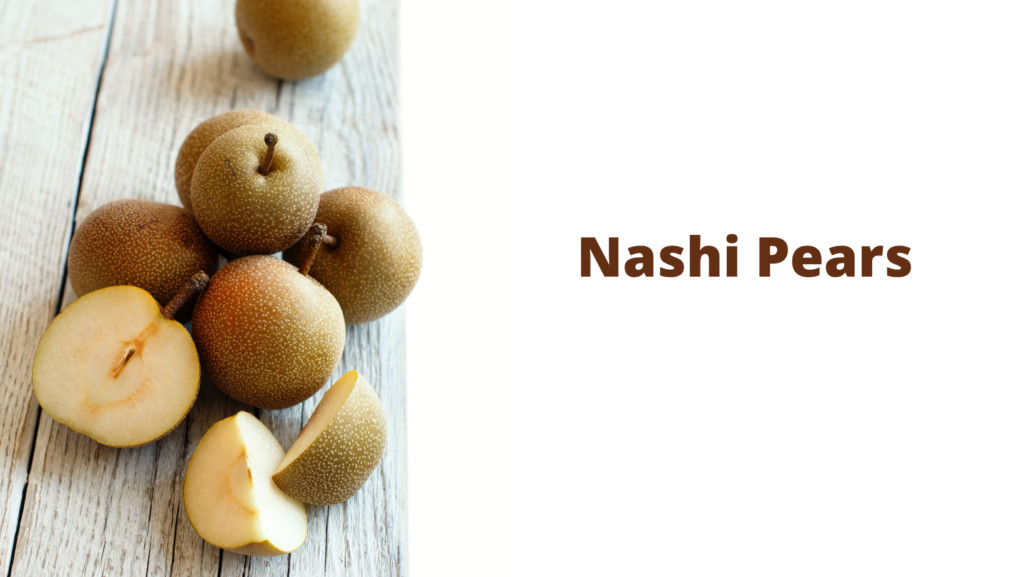Brown Fruits
As apples, pears, peaches, and bananas ripen, they often turn brown in color. This change occurs due to a reaction between the fruit’s polyphenols and the oxygen in the air. This oxidation process is what causes the fruit to brown.
However, this browning does not affect the taste or safety of the fruit. Many people believe that fruits taste best when they’re slightly brown. So, if you see a brown apple or pear, don’t throw it away – it’s just ripe and ready to eat!
List of 16 Brown Fruits Known To Us
We’ll go through each of the 16 different brown fruits in detail below since we know some are somewhat unusual, so you’ve probably never heard about them.
- Apples
- Bananas
- Cupuacu
- Coconut
- Dates
- Durian
- Kiwi
- Langsat
- Longan
- Medlars
- Nashi Pears
- Passionfruit
- Pear
- Salak
- Sapodilla
- Tamarind
Apples
Apples are one of the most popular fruits in the world. Though they are often associated with the fall season, apples are available year-round.

There are over 7,500 varieties of apples grown worldwide, though the most popular types include Granny Smith, Honeycrisp, and Red Delicious. Apples vary in color, taste, and texture, making them versatile fruit used in various dishes. In addition to being eaten fresh, apples can also be cooked, baked, or dried.
Apples are a good source of fiber and vitamins A and C. They also contain antioxidants, which can help protect against some chronic diseases. Though they are relatively low in calories, apples should be eaten in moderation as they have sugar. Overall, apples are a nutritious and delicious fruit that can be enjoyed in many different ways.
Bananas
Bananas are one of the most popular fruits in the world. They are eaten fresh, cooked, or baked in various dishes. They are also a good source of vitamins and minerals, including potassium, vitamin C, and dietary fiber. Bananas can be found in many colors, including yellow, green, and red.
The most popular type of banana is the Cavendish banana, which makes up about 95% of the bananas grown worldwide.

Bananas are native to Southeast Asia and were first brought to the Americas by Spanish explorers in the 16th century.
Today, most bananas are grown in Latin America and Africa. The United States is the largest importer of bananas, followed by Germany and the United Kingdom.
Cupuacu

Cupuacu is a tropical fruit that is native to the Amazon rainforest. The fruit is large and pear-shaped, with a thick, white flesh surrounding a large seed. Cupuacu has a sweet, chocolatey flavor described as a cross between chocolate and pear. The fruit is rich in antioxidants and vitamins C and B, making it an excellent addition to any diet.
Cupuacu can be eaten fresh or used in smoothies, juices, and desserts. It is also becoming increasingly popular as an ingredient in health supplements. With its unique flavor and health benefits, Cupuacu is an exciting new addition to the world of tropical fruits.
Coconut

The coconut is a versatile fruit that can be used in various ways. The meat of the coconut can be eaten as is or used in recipes, the water can be drunk for refreshment, and the oil can be used for cooking or as a moisturizer. In addition to being delicious and healthy, coconuts are relatively easy to grow.
They thrive in tropical climates and require very little care. As a result, they are an important crop in many parts of the world. The next time you’re looking for a healthy snack or refreshing drink, reach for a coconut. You’ll be glad you did!
Dates

Dates are a type of fruit that grows on date palms. Date palms are native to the deserts of North Africa and the Middle East and have been cultivated for centuries. Dates are a staple food in these regions and are often used as a natural sweetener in recipes.
Date palms are hardy plants that can withstand extreme heat and drought, making them well-suited to desert conditions. The date palm fruit is rich in vitamins, minerals, and a good dietary fiber source.
Dates are also known for their ability to improve digestion and promote regularity. For these reasons, dates are often consumed as part of a healthy diet.
Durian

Of all the fruits in the world, few are as polarizing as the durian. Some prized this strange-looking fruit for its unique flavor, while others couldn’t stand the smell. Durian grows in Southeast Asia and is known for its large size and spiky exterior. The fruit’s flesh is white or yellow and is often compared to custard or cheese in taste.
Durian has a powerful odor that some people find offensive.
The odor is divisive, evoking sensations ranging from profound gratitude to intense repulsion. It has been called rotten onions, turpentine, and raw sewage, among other things.
Durian is banned in many public places due to its potent scent. Whether you love or hate it, there’s no denying that durian is a unique fruit.
Kiwi

Delight in the taste of kiwi by indulging in it as is or adding it to various sweet dishes. Oblong in shape, this fruit has a light brown skin that encases its flesh, a bright green. The latter contains tiny, edible black seeds.
To eat kiwi, cut it horizontally in two halves and remove the pulp with a spoon. Do note that the peel is not edible. You can also add kiwi slices as a decorative element to elevate the look of desserts. not only does it provide an aesthetically pleasing contrast, but it also tastes good! Given its unique flavor, kiwi can stand on its own as a snack or be mixed with other fruits in salads and cakes. versatile and delicious, make sure to have this fruit in your kitchen all year round.
Langsat

The langsat is a tropical fruit that is native to Southeast Asia. It grows on a tree that can reach up to 30 meters in height. The langsat fruit is small and round, with a thin brown skin that encases its white flesh. The flesh is sweet and juicy, with a taste described as a cross between a grape and lime. The langsat fruit is often used in desserts and sweet dishes, as well as in jams and preserves.
Longan
The longan is a tropical fruit that is native to Southeast Asia. It grows on a tree that can reach up to 30 meters in height. The longan fruit is small and round, with a thin brown skin that encases its white flesh.

The flesh is sweet and juicy, with a taste described as a cross between a grape and lime. The longan fruit is often used in desserts and sweet dishes, as well as in jams and preserves.
Medlars
Medlars are a type of fruit that resembles a small apple. The skin is rough and the flesh is mealy, but the taste is sweet and reminiscent of a cross between an apple and a pear. Medlars are native to Asia and have been cultivated for centuries.

In ancient times, they were often used in traditional Chinese medicine. They are grown commercially in many countries, including China, Japan, and Korea. Medlars are an excellent source of vitamins C and A and dietary fiber.
They can be eaten fresh or used in pies and other desserts. Medlars are also sometimes used as an ingredient in savory dishes such as stews and curries. Whether you enjoy them fresh or cooked, medlars are a delicious and nutritious addition to any diet.
Nashi Pears
Nashi Pears are a type of Asian pear that is rounder and juicier than other varieties. The skin is thinner and less firm, making it perfect for eating out of hand. Nashi Pears are grown in China, Japan, and Korea and are a popular snack in all three countries.

They are often given as gifts or used in special occasion dishes in Japan. They are often served peeled and sliced in Korea as a side dish. And in China, they are used in everything from stir-fries to desserts. No matter how they are eaten, Nashi Pears are a delicious and refreshing treat.
Passionfruit
Passionfruit can be a little intimidating if you’ve never had it before. It’s got a weird name and an even weirder appearance.

But don’t let that stop you from trying this delicious fruit! Passionfruit is packed full of nutrients and has a unique flavor that everyone should experience at least once.
Passionfruit is a round or oval fruit with a thin, wrinkled skin. The skin is usually yellow or purple and is filled with tiny black seeds. The fruit’s flesh is sweet and tart, with a citrusy flavor. Passionfruit can be eaten raw or made into juices, jams, and desserts.
Pear
The pear is a member of the rose family and is related to apples and quinces. The tree is native to Europe, Asia, and North Africa and has been cultivated for centuries.

Pears are typically round or oval, with smooth skin that can be green, yellow, brown, or red. The flesh of the pear is white or cream-colored and contains a small seed core. Pear trees are generally medium-sized, reaching a height of 15-20 feet.
They produce small white flowers that bloom in the springtime. The fruit of the pear tree is harvested in the late summer or early fall. Many pears are available, including Anjou, Bartlett, and Bosc. Pears can be eaten fresh, canned, or cooked and are often used in pies and other desserts.
Salak
Salak is a tropical fruit that is native to Indonesia. The fruit is small and brown, with a leathery skin and a fleshy interior. It has a distinctly sharp flavor and is often used in savory dishes.
Salak is an excellent vitamin C source and contains antioxidants, which can help protect against cell damage. The fruit is low in calories and fat, making it a healthy choice for snacks or desserts. Salak can be eaten fresh or used in cooked dishes. It can also be dried and powdered to make a spice for curries or other dishes.
When shopping for salak, look for fruits that are firm and free from blemishes. The skin should be intact, and the flesh should be white or pale pink. Avoid soft or mushy fruits, as these will not be as flavorful. Salak can be stored at room temperature for up to a week or refrigerated for up to two weeks.

To extend its shelf life, the fruit can also be frozen. When cooking with salak, it is essential to remember that the sharp flavor of the fruit can easily dominate other flavors. As a result, it is best to use salak sparingly in dishes. A
Sapodilla
Salak is a tropical fruit that is native to Indonesia. The fruit is small and brown, with a leathery skin and a fleshy interior. It has a distinctly sharp flavor and is often used in savory dishes. Salak is an excellent source of vitamin C and contains antioxidants, which can help to protect against cell damage. The fruit is low in calories and fat, making it a healthy choice for snacks or desserts.
Salak can be eaten fresh or used in cooked dishes. It can also be dried and powdered to make a spice for curries or other dishes. When shopping for salak, look for fruits that are firm and free from blemishes. The skin should be intact, and the flesh should be white or pale pink.

Avoid soft or mushy fruits, as these will not be as flavorful. Salak can be stored at room temperature for up to a week or refrigerated for up to two weeks. To extend its shelf life, the fruit can also be frozen. When cooking with salak, it is essential to remember that the sharp flavor of the fruit can easily dominate other flavors. As a result, it is best to use salak sparingly in dishes.
Tamarind
Tamarind is a tropical fruit that grows on trees. The fruit is oblong and has dark brown or reddish-brown skin. Inside the fruit is a sweet, tangy pulp that is used in various cuisines around the world. Tamarind can be eaten fresh, or the pulp can be dried and used as a seasoning.

The tree is native to Africa, but it now grows in many tropical regions. Tamarind is often used in savory dishes, such as curries and stews. It can also be used to make desserts, such as tamarind ice cream or tamarind pie.
In addition to its culinary uses, tamarind is also used medicinally. The pulp has been used to treat digestive problems, and the bark and leaves have been used to make a laxative tea. Tamarind is an essential ingredient in many traditional dishes, and its unique flavor has made it a popular choice in modern cuisine.
The tamarind Tree grows tamarind fruit nature ree grow name oi the tree is tart-sweet juicy red color pulped dried Scientific name for this tree is Swietenia Juberia belongs to the family of legumes pods edible pods we get seeds from this particular tree which is used as a condiment and also used in many dishes like chutneys, sauces, curries and more.
What Fruits or Vegetables Are Brown?
Other fruits and vegetables, such as bananas, mushrooms, lettuce, pear, cauliflower, and especially avocados, also turn brown when cut. Other fruits and vegetables that should be treated similarly include eggplants, bananas (when they become blackened), asparagus (when it gets blackish around the spears), pears (when they
What Fruits Can Turn Brown?
Apples, pears, peaches, and bananas are some fruits that turn brown. There are a variety of ways to keep fruit from turning brown.

What fruit is brown outside and yellow inside?
The fruit is called sapodilla. It is brown on the outside and yellow on the inside.
Why do fruits become brown?
Fresh fruit and vegetables contain enzymes that are trapped within their tissues. When the fruit is sliced, squashed, or starts to decay with age, the enzymes come into touch with oxygen in the air. This causes the fruit to discolor.
Which fruit is also a color?
Is there any other fruit that matches your color? Peach is a fruit that is also a hue.
What fruits are named after colors?
Blueberries are the only fruit to be named for a hue.
What is brown fruit?
Ripe fruits, such as apples, pears, peaches, and bananas, frequently become brown.
What fruits turn brown after cutting?
When fruits, such as bananas, apples, guava, and others, are sliced and left for an extended period, they become discolored. It’s certainly not a pretty sight! The mechanism is due to the fruit’s exposure to air – enzymes in the fruits react with the surrounding air.
Are nectarines brown inside?
The discoloration near the pit is generally more severe. The flesh becomes a darker brown, and gray-brown water-soaked areas spread out from around the pit into the meat. The graininess grows as the condition worsens, and the affected flesh has a woody or mealy texture, is off-flavored, and lacks juiciness.

Nectarines can brown inside for several reasons, such as over-ripe fruit, bruising, or exposure to air. If you notice that your nectarines are starting to brown, it’s best to consume them immediately or cook them, so they don’t spoil.

Is there any black fruit?
Black fruit refers to various fruits with black rinds, including black currant, huckleberry, black cherry, plum, and any other dark-skinned fruits that spring to mind. “Red fruit” encompasses raspberries, strawberries, redcurrants, and the like; it is a catchall term used to refer to all types of fruits with red pigmentation in their skins. “Purple fruit” is a term for any fruits with dark purple or blue skin, such as blueberries, blackberries, and grapes. There is no real difference between these terms other than the color of the fruit in question.
What are some yellow fruits?
Some yellow fruits include lemons, grapefruits, bananas, and honeydews. These fruits are all shades of yellow, each with a unique taste and texture.
What fruit is yellow beside a banana?
Yellow fruits include apples, lemons, plums, and pears. Bananas, pineapples, mangoes, and yellow star fruit are some sweet tropical yellow fruits. Other uncommon yellow fruits include yuzu, loquat, watermelon, and golden raspberries.
What color is a grapefruit?
The skin is light green and may be tinged with yellow or red. It was formerly known as the “Forbidden Fruit” and, later, as grapefruit since it develops in large grape-like bunches. It’s high in an antioxidant called lycopene that gives the fruit its pink color.
Why do apples go brown?
Air enters the wounded plant tissue when an apple is sliced (or banged). The PPO enzymes in the chloroplasts react rapidly to phenolic compounds naturally present in the apple tissues, oxidizing them to o-quinones, colorless precursors to brown-colored secondary products when oxygen is available in cells.

Can you eat brown apples?
We’ve all been there; you leave a few apple slices out for too long, or take too long to eat your way around an apple, and are confronted with an unsightly sight. Your formerly crunchy, juicy white apple has become discolored. It’s not very appealing. The good news is that a brown apple is completely fine
Why do apples and bananas brown?
When fruit is exposed to oxygen, chemical reactions take place inside the fruit. Melanin, the same dark brown pigment that gives hair, skin, and eyes their color, is produced as a result. The enzyme that causes browning, known as polyphenol oxidase (or PPO), is called such because it generates compounds with
Is there a rainbow fruit?
The Rainbow Fruit (also known as the Niji Niji no Mi (Rainbow Rainbow Fruit)) is a mythical fruit that was thought to have vanished from the Earth, but one Rainbow Fruit plant survives in IGO’s 8th Biotope Garden.
Is Cherry a color?
Cherry red is a rich, brilliant crimson hue with the hex code #D2042D, primarily colored in red in the RGB color system.
Which fruit is called the king of fruits?
Durian is known as the “King of Fruits,” however, it divides opinions like Marmite, with some people loving the flavor of its custard-like pulp and others hating its pungent odor.
What fruit keeps the doctor away?
According to legend, Norse sailors would carve a cross in the bottom of their ships’ apple barrels. The apples were then put into another barrel filled with water as a precaution against rats and rodents trying to steal them. -> “An apple a day keeps the doctor away” is an English proverb that dates back to the 19th century,
What color are blackberries?
Blackberries begin as green fruits after a blackberry flower is pollinated. The berry will become lighter and greener as it matures. The color of the blackberry fruit will subsequently change from pink to brilliant crimson.
What color is a blueberry?
Blueberries, like grapes, don’t actually exist in the color blue. Anthocyanin is a pigment that is particularly abundant in blueberries. Human beings have developed an affinity for and a desire to consume colored meals due to natural selection.
What is brown sugar fruit?
The name “Sapodilla” comes from the sweet, malto-like texture of this fruit. When individuals receive this fruit in their box, they occasionally confuse it for a potato! When you’ve never eaten a new fruit before, determining when it’s ripe can be difficult.
Is coconut a fruit?
According to botany, coconut is a fibrous one-seeded drupe that is a fruit with a hard shell enclosing the seed. A plant’s reproductive unit is its seed.
Is potato a fruit?
Potatoes are a type of root vegetable. They aren’t the potato plant’s actual roots but the offshoots that grow from them. Potatoes are edible and are almost exclusively used in savory meals with or without protein. Potatoes are not fruit in any sense of the word.
Which apples turn brown the fastest?
The variety that browns the fastest is Golden Delicious. On the other hand, Granny Smith apples and Cameo apples brown less quickly.
Does cut pear go brown?
Browning occurs when apples or pears that have just been sliced come into contact with oxygen, a natural process called oxidization or enzymatic browning. The rate of browning varies depending on the apple or pear variety and the fruit’s age.
Do pears turn brown like apples?
But there are a few substances that will prevent them from turning brown. Apples (and pears) oxidize and brown when sliced and exposed to air. Therefore, it’s challenging to keep them looking fresh for long periods. Even though they taste good, they aren’t particularly delicious that way. So I’ve experimented with several methods.
Can you eat a brown peach?
The brown part of the peach should be safe to eat, but it may not be very nice. Peaches that have been picked early and kept in the cold often lack some of the sweetness and crispiness of fresh peach, and you might find that you can’t enjoy the fruit as a result. However, it will not be
Why is my plum brown inside?
When plums are cooled rapidly after harvest, they acquire more internal browning. Keeping plums at slightly warmer temperatures for the entire storage time is not a good idea because the fruit will be soft and prone to decay.

















